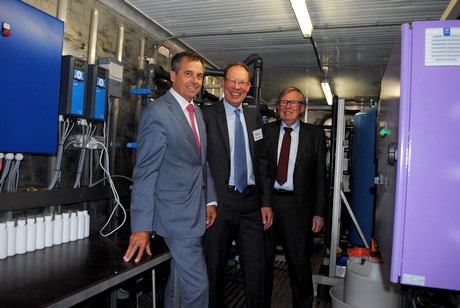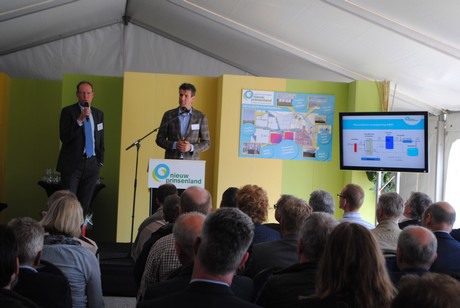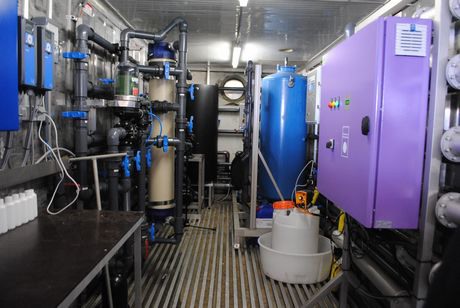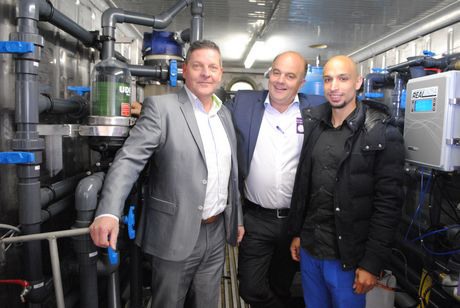
Another twelve years, and then the greenhouse sector should be almost emission free. The three growers in Nieuw Prinsenland (RedStar, Jan van Marrewijk and Peter de Jong), no longer need to worry. The drain water purification system in the area was officially inaugurated. The system includes a separate pipe system by which the drain water can be stored in a tank (27,000 m3). The water then undergoes various treatments: an ultrafiltration membrane, heating and disinfection (in which UV is combined with peroxide). These treatments allow for water to be continuously purified, at a rate of 5m3 per hour.

Zero emission
"This in turn allows the growers to gain their license to produce," says Nico van Ruiten, who officially opened the system with Piet Janmaat (TOM) and Theo Schots (Waterschap Brabantse Delta). "The region also concentrates on energy and plant health. It offers perspective in a troubled market. These locations are desperately needed in the coming years." But it's not just about market prospects, says Guus Meis of LTO Glaskracht Netherlands, speaking about the zero-emission of 2027. Innovations such as AquaReuse, Glas Zuiver Water and Drain water purification contribute to this goal, but a ban on reverse osmosis and restrictions on labels of plant protection products can, according to him, have a reverse effect. There is no single solution, but collectivity and cooperation between growers and authorities is essential.

Hans Huiting of KWR outlined the scientific capabilities of the water treatment plants. The degree of purification is determined by the light transmittance of the water, and the organic material present in it. "If a purification method works, will it also works on all the 120 means permitted? And will the metabolites not be more harmful than the method?"

Achievable requirements
The 2027 requirements appear to present an important but difficult issue. For one thing, the system still leaves a residual current. "The system in Nieuw Prinsenland isn´t a temporary project, which makes it possible to further investigate these issues. Only then can we prepare for the future while reducing the cost by recycling nutrients."
For more information:
www.tombrabant.nl
